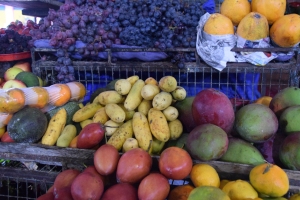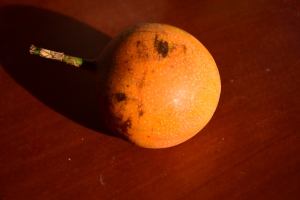Ecuador Country Bundle: suggestions, stories and tips
Main content and contributions about Ecuador on WorldSupporter
Ecuador: Updates & Travel
 Ecuador: Updates & Travel
Ecuador: Updates & Travel
Travel in Ecuador?
- In Ecuador you will find the colorful markets, the Amazon area where you can make beautiful jungle trips, and the coastal areas with quiet, traditional fishing villages. There are also very lively seaside resorts where you can really let loose. You can also visit the Galapagos Islands: this costs a penny extra, but the beautiful surroundings are worth it. You can swim with dolphins, and also see other animals such as sea lions, penguins, large turtles, pelicans and iguanas. The underwater world is beautiful
- In Ecuador you will find the colorful and now world-famous Indian markets, nice for souvenirs and a cultural experience.
- Between Quito and Cuenca in the valley you will find many mountains and volcanoes. The most famous volcano with eternal snow is the Cotopaxi (5,897m). The Cotopaxi National Park is also located here. The snow-capped Chimborazo (6,310m) is a challenge for mountain climbers.
- From Cuenca you can go to the Inca Pirca, the most important and best preserved ruin from the Inca era.
- In the east, the Oriente, lies the Amazon region with many species of flora and fauna. There are various options for an Amazon trip. Make sure you are well informed when choosing your trip.
- By train you can go from Alausi to Huigran along the scary, but fantastic, Devil's Nose Route.
- On the Galapagos Islands you can snorkel with sharks, swim with sea lions and penguins, admire the many iguanas, see the famous Darwin finches and experience what it is like when animals have little fear of people. Because this comes with a hefty price tag, the number of boats that sail you and your fellow passengers along the islands remains somewhat limited. You are certainly not the only one, but you do not have to queue. If you can't afford the Galapagos, there is a reasonable alternative in the form of 'little Galapagos' (Isla de la Plata, near Manta on the coast of Ecuador) known as the Galapagos Islands for the poor.
- The capital Quito is located in the Andes Valley. Here you can visit the old city center, the Casa de la Cultura museum, stroll through the crowded market, visit the colonial churches or play volleyball in the city park.
- In Baños, a very relaxed village in a beautiful area, you will find hot springs, an ice-cold waterfall on the edge of the Tungurahua volcano, beautiful horse riding routes through the mountains for experienced and inexperienced riders, hiking trails and mountain bike trails. If you have trouble with the altitude in Quito, you can easily get used to it in Baños, which is located a bit lower.
- North of Quito lies Otavalo where the famous Saturday market is held, the meeting place for the colorful Indian population. Pan flutes, sweaters, caps, scarves and bags change hands and eventually end up in Europe. If you travel a little further, you can make the unforgettable trip from Ibarra to Esmaraldas.
- There are also very lively seaside resorts where you can party, for example in Montañita.
- Be prepared that on the night buses that travel long distances, the drivers sometimes drive like crazy. People are also often robbed on these night buses. So be on your guard.
- If you are going on a jungle tour through the rainforest, the rainy season can sometimes spoil the fun.
- If you do not speak Spanish, it can be difficult to find your way. English is not spoken everywhere and even Spanish is sometimes difficult for the native population!
- Be prepared that the Galapagos Islands are fantastic and at the same time a drain on your wallet.
Updates Ecuador
- More about Ecuador, updates and contributions, see the link below.
What are typical Ecuadorian habits, food customs, recipes and philosophies in Ecuador?
 What are typical Ecuadorian habits, food customs, recipes and philosophies in Ecuador?
What are typical Ecuadorian habits, food customs, recipes and philosophies in Ecuador?
What are the customs in Ecuador regarding food?
- In Ecuador, people mainly eat a lot of rice, potatoes, pasta, chicken and cabbage. Often spicy but not spicy. The atmosphere in restaurants is often excellent because of the large number of musical groups that come in to perform their skills on the pan flute. If you are vegetarian or vegan, it can be difficult to find meals in Ecuador. A tip, be sure to specify what you do eat (i.e. ask for a plate of rice, beans and salad), that works better than specifying what you don't eat.
What are the best recipes in Ecuador?
- Arroz con Pollo is a dish of rice with chicken.
- Lomo saltado is beef sautéed in onion and tomato with rice.
- Churrasco is beef with fried egg.
- Aji is the tangy sauce that you get with everything separately.
- Cuy Chactado is a traditional Inca dish and should be tried by every traveler. While doing so, get over the fact that it involves grilled guinea pig!
- Arepas are corn pancakes with cheese.
- Fanesca is a dish of different grains, corn, potatoes and stockfish.
- Llapingachos: Small fried cookies made of mashed potatoes and cheese.
- Locro: Soup with potatoes, onions and cheese. Often served with avocado.
- Tropical fruits: maracuya (passion fruit), bananas of all shapes and sizes, guava, pineapple, mango, chirimoya, naranjilla (sour orange).
What are the best drinks in Ecuador?
- Beer is available everywhere. Club and Pilsener are the Ecuadorian brands.
- Soft drinks can also be found everywhere both well known and unknown brands.
- The fresh fruit juices are delicious.
- Enjoy a delicious fresh milkshake with tropical fruits.
- An excellent thirst quencher is the Piaco, a drink made from lemon.
What are notable holidays and festivals in ...?
- New Year is lots of fire, papier-mâché cars and figures: one big party!
- Carnival: nice and colorful with water fights and fruit and flower festivals.
- Dia de los Inocentes: festival in Cuenca, Nov. 6, a hilarious parade of dressed-up men and boys that the whole city comes to see.
- All Souls' Day: Nov. 2, in celebration people lay flower bouquets in cemeteries.
What are the remarkable habits in Ecuador?
- Ecuador is known for its strong family ties and sense of community. Family plays a central role in daily life, with extended family gatherings and a deep sense of respect and care for the elderly. Cultural festivals, such as Inti Raymi (the Sun Festival) and Carnival, are of great significance and are celebrated lavishly throughout the country.
- Social norms and mutual communication: A little courtesy will get you a long way! A greeting is a must when you start a conversation. Whether it is short or long - say hello, shake hands and between men and women, a single kiss on the cheek is sometimes exchanged. Expect to use the same greeting when saying goodbye.
- Etiquettes & traditions: Ecuador is a long of traditions and is still fairly old-fashioned. Apart from greetings, respect for personal space is very important. So be sure to keep an appropriate distance during interactions unless you have developed a strong bond. People also value appropriate dress, especially at religious or business gatherings. Hospitality also plays an important role in Ecuador.
- Eating and drinking habits: meals are huge social occasions and can be long. As crazy as it sounds, don't arrive on time when you are invited somewhere. Always arrive a little later and make sure you are neatly dressed out of respect to the hoste. What does agree with us is that Ecuadorians say bon appetit (buen provecho) before a meal when dining out with friends. If you are invited home, the host says buen provecho to invite you to start eating. Food is always eaten with cutlery.
Why to study in Ecuador, do an internship, do volunteer work or look for a job in Ecuador?
 Why to study in Ecuador, do an internship, do volunteer work or look for a job in Ecuador?
Why to study in Ecuador, do an internship, do volunteer work or look for a job in Ecuador?
Why study, do an internship, volunteer or work temporarily in Ecuador?
- Because it is relatively safe depending on where you are.
- Because it is a great opportunity to improve your Spanish.
- Because you will find rich and ancient cultural diversity.
- Because you can gain very specific knowledge.
- Because you can make a deeper connection with Ecuadorian culture and local peoples.
What should you pay attention to?
- That you end up with a good organization and that your money goes to the right purposes.
- That you stay aware of local security risks and take good care of your belongings.
- that you adapt your clothing to local standards and climate.
Why live in Ecuador, why emigrate to Ecuador or stay for a long time?
 Why live in Ecuador, why emigrate to Ecuador or stay for a long time?
Why live in Ecuador, why emigrate to Ecuador or stay for a long time?
Why should you live in Ecuador as an expat, emigrant or working nomad?
- because there is a great diversity of landscapes and therefore something for everyone.
- because the climate is temperate in many places. So you can easily cool down, or seek out the heat when you want to.
- because there is a lot of cultural heritage to discover.
- because it is one of the more affordable countries in South America.
- because Ecuadorians are incredibly friendly and welcoming and there are also several expat communities.
What should you pay attention to?
- that you know some words of Spanish.
- that prices can vary considerably between cities and towns.
- that there are health risks.
- that you are aware of the local culture, traditions and customs.
- build a network to help you integrate more easily into society.
How does healthcare work in Ecuador, and what travel insurance, health insurance or expat insurance do you need?
 How does healthcare work in Ecuador, and what travel insurance, health insurance or expat insurance do you need?
How does healthcare work in Ecuador, and what travel insurance, health insurance or expat insurance do you need?
- How does the health care system work in Ecuador?
- How does the public health care work in Ecuador?
- How does the private health care work in Ecuador?
- How is the family doctor arranged in Ecuador?
- How is the dentist arranged in Ecuador?
- How is the pregnancy care arranged in Ecuador?
- How safe or unsafe is a trip or stay in Ecuador?
- What should you look out for to in terms of diseases in Ecuador?
- What work and travel insurance policies are suitable for short and long stays in Ecuador?
- What emigration and expat insurance can you take out for Ecuador if you are going to live there for a while?
How does the health care system work in Ecuador?
- Affordable and good healthcare is one of the reasons why expats (e.g., from the U.S.) move to Ecuador.
- In Ecuador, you have both public and private healthcare facilities to choose from.
- Many doctors are trained abroad and know what they are talking about.
- In larger cities like Quito, Guayaquil and Cuenca, you'll find affordable and accessible care. Outside the big cities, care is generally of lower quality.
- The country has invested heavily in healthcare in recent years, improving the level of care.
- Pharmacies are easy to find, especially in the big cities. Pharmacists also provide medical advice and medications can be purchased for which you need a prescription in other countries. However, be aware of the side effects and possible addictiveness of such over-the-counter medications.
- Call 911 for emergency medical assistance (ambulance).
How does the public health care work in Ecuador?
- Public health care is provided by the Instituto Ecuatoriano de Seguridad Social (IESS) - a system that provides services to workers through a contribution from salary.
- Expats with residency visas can also become members of the IESS.
- As an IESS member, you pay a monthly fee and get access to a wide range of medical services.
- If you are not insured through the IESS, you can access public hospitals at low cost. You can also get good medical care here, but the choice is more limited.
- The quality of public care varies. In urban areas, facilities are reasonable, but rural areas may lack resources. Waiting times in public hospitals can also be long.
How does the private health care work in Ecuador?
- Despite IESS being a good safety net for emigrants, most choose to supplement/replace it with private insurance that fills in the gaps and offers more options.
- Private institutions, as in most countries, offer faster access to care and better service. Also, private care is generally of very good quality.
- Private care is more expensive though (although prices are a lot better than in countries like the U.S. and in Europe). You can avoid these extra costs by getting international health insurance.
- In private healthcare, you will more often encounter staff trained abroad. This also means that there are generally more English-speaking staff.
How is the family doctor arranged in Ecuador?
- There are general practitioners in Ecuador. These are generally found in hospitals or private clinics.
- You can also just make an appointment directly with a specialist.
- Check with your insurance company which practices you can visit.
How is the dentist arranged in Ecuador?
- Also in dental care you will find many doctors who speak English.
- Dentists in Ecuador do a five-year degree, similar to a bachelor's degree, and sometimes supplement it with some kind of master's degree in Ecuador or abroad.
- These degrees are registered online in the SENESCYT system, which patients can check with the doctor's full name.
- Dental treatment is affordable, but it is helpful to have private insurance to cover these costs.
How is the pregnancy care arranged in Ecuador?
- In Ecuador, you can get good pregnancy care in both public hospitals and private facilities.
- Most people give birth in the hospital, some at home or in birthing centers.
- Through the public system, you can get free prenatal and delivery care.
- In private care, on the other hand, you get more personal attention and have more luxurious options. So many expats choose this.
- To get the most out of your pregnancy classes, it may be wise to learn Spanish.
- Abortion is illegal in Ecuador, with some exceptions.
How safe or unsafe is a trip or stay in Ecuador?
What should you pay attention to in terms of safety in Ecuador?
- Crime is common in Ecuador. This does not necessarily make the country unsafe for expatriates, but it does mean that it is good to be aware of the risks.
- The most common safety concerns for expats are theft and robberies. Be extra careful in crowded places and at ATMs and be aware of distraction tricks.
- Cabs are not always safe in Ecuador. So it is better to use registered cabs.
- There are several areas where crime is more intense. For example, be careful in border areas with Colombia (Carchi, Esmeraldas, Sucumbios) because of drug-related crime, and be careful in Zamora-Chinchipe on the border with Peru because of unexploded mines.
- Avoid traveling after dark in remote areas, keep your passport and other documents safe, do not carry large amounts of cash with you, and always cooperate if you are robbed.
- There are frequent demonstrations, which can get out of hand. It is best to avoid such gatherings; as a foreigner, you are also prohibited from engaging in political activity in Ecuador.
- As a woman alone, it is also important to be careful.
What should you look out for to in terms of diseases in Ecuador?
- Diseases transmitted by insects (especially mosquitoes) are one of the greater risks in Ecuador. Malaria and dengue are the most common.
- There are also several vaccinations recommended for staying in Ecuador. Check this in advance with your vaccination doctor.
- Another risk in Ecuador is altitude sickness. Quito is one of the highest capital cities in the world and some people experience symptoms of altitude sickness as soon as they are in the city. So keep a close eye if you feel nauseous, have a headache and can't sleep, for example. This can be treated, but if it gets worse you should consult a doctor immediately.
- Tap water is not safe to drink.
What should you pay attention to in terms of traffic in Ecuador?
- Driving in Ecuador can be quite stressful. The streets are narrow, not always very good (outside the cities) and landslides occur in winter, especially in the mountains.
- Drivers in Ecuador do not care much about traffic rules and can drive hard and carelessly. Driving under the influence is also common. Make sure you drive carefully, that your tank is always full and your doors are locked. Do not leave valuables in the car.
- Ecuador has a bus system. It is a good alternative to driving yourself, although not all drivers drive as carefully and you do have to watch out for theft.
What work and travel insurance policies are suitable for short and long stays in Ecuador?
- Is the trip to Ecuador and your return sufficiently covered? Are you sufficiently covered before, during and after your activities? Which insurance best suits your trip and your activity? Read more about insurances for abroad on JoHoinsurances.org.
What emigration and expat insurance can you take out for Ecuador if you are going to live there for a while?
- Due to pressure on the public health care system, it is now mandatory to have private health insurance to enter Ecuador.
- Read more about insurances for abroad on Expatinsurances.org.
What are typical South American remarkable holidays and holiday habits?
 What are typical South American remarkable holidays and holiday habits?
What are typical South American remarkable holidays and holiday habits?
What are typical South American remarkable holidays and holiday habits?
- Silvester evening is the last night in the year, the 31st of december. Silvester is the name of a holy pope. In general after midnight fireworks are burned. It comes from the belief that firework will keep ghosts away.
What are remarkable holidays in Colombia?
- Colombia's holidays reflect the Catholic history and heritage, providing opportunities for both religious observance and national celebration.
- Colombia's Independence Day is celebrated extensively on July 20 with concerts, parades and costume parties.
- It is sometimes said that the carnival of Barranquilla is the most colorful carnival in the world. In any case, after the carnival in Rio, it is the one with the most visitors. Every year in January, it celebrates for 4 days.
- During La Feria de Cali from December 25 to 30, the city of Cali turns into one big party. People flock from all over the country for the horse parades, beautiful women, bullfights and delicious food. The essence of the party is salsa, here the best salsa in the world is danced by professionals and accompanied by the most famous Salsa orchestras of Colombia and other South American countries.
- Flower Festival of Medellín: For several days a year, the city of Medellín in the Andean region is one big Sea of Flowers. During this 10-day celebration in August, all balconies, terraces and gardens are covered with flowers.
- The superstition with new year is: wear yellow underwear, that makes the next year for sure financial beneficial. You know what you gotta do!
What are remarkable holidays in Ecuador?
- In Ecuador holidays are a vibrant blend of indigenous traditions and Catholic influences.
- With el ano Viejo and Nuevo ano (new year) men dress as widows to mourn the passing year. It is meant to be done with humor and fun.
- The Ecuadorians wear yellow underwear with new year, that makes the next year financially well.
- Carnival is a time of joy and playfulness it is celebrated with water fights and foam sprays. Parades are lively and colourful.
- The festival of the sun (Inti Raymi) honours Mother Earth (Pachamama) and celebrates the winter solstice. It is a celebration with offerings, traditional dance and music.
What are remarkable holidays in Mexico?
- On average, there are four holidays per month in Mexico. Each day on the calendar is actually a holiday in Mexico. Calendar days are dedicated to saints with names. Also called “name days.” It's similar to a birthday. If you, as a Mexican, have the same name as the saint the day is named after, you are congratulated and receive gifts. For example, June 24 is the name day of San Juan.
- Constitution Day is a national holiday in Mexico. Originally, Feb. 5 was the fixed date for this. In 1857 and 1917, Mexican constitutions were adopted on this date. In 2006, it was decided to celebrate it on the first Tuesday of the year.
- On May 5, Mexicans celebrate the day Mexico defeated a French army in the Battle of Puebla. The discovery of America by Columbus used to be celebrated grandly in Mexico. However, after 300 years of misery by Europeans, it was decided to celebrate something else on Oct. 12. Today, Mexico celebrates Race Day. This refers to the new race that emerged from the Europeans and the Indians.
- In Mexico, they celebrate the “Day of the Dead” (El Dia de los Muertos). Also called All Saints' Day and All Souls' Day. This national holiday is on November 1 and 2, and Mexicans celebrate on this day that the dead come back to earth to visit the living. The dead are then the guests of the living on that day. Cemeteries are crowded, picnics are held at gravesites and skulls are used as decorations. Bakers sell the bread of death on this festive day.
- December 12 is the most important holiday in Mexico. Mexicans then celebrate the national feast of the Virgin of Guadalupe. This patron saint of Mexico is said to have been beheld as a Marian apparition in 1531 by Saint Juan Diego Cuauhtlatoatzin. Pilgrims in Mexico walk with torches and wear tunic referring to Juan Diego's clothing. Tens of thousands of Mexicans climb the mountain that day to the basilica “Iglesia de Guadalupe” in Mexico City. All day in Mexico there is celebration with music and fireworks.
- Christmas starts in Mexico on the 16th of december with the "Posadas", which are processions through the streets with plays of the story of Maria and Joseph. Every evening ends with a feast and breaking of a pinata. On Nochebuena, christmas eve, diner is served with tamales, bacalao, and ponche (fruitpunch). After dinner a lot of people go to Misa de Gallo, a mis at church, followed with firework.
Ecuador: selection of contributions by WorldSupporters - Bundle
 Ecuador: selection of contributions by WorldSupporters - Bundle
Ecuador: selection of contributions by WorldSupporters - Bundle
Content about Ecuador shared by WorldSupporters
Access:
Public
Ecuador: selectie van bijdragen van Wereldsupporters
 Ecuador: selectie van bijdragen van Wereldsupporters
Ecuador: selectie van bijdragen van Wereldsupporters
Selectie van bijdragen van Wereldsupporters over Ecuador
Access:
Public
- 392 keer gelezen





























































